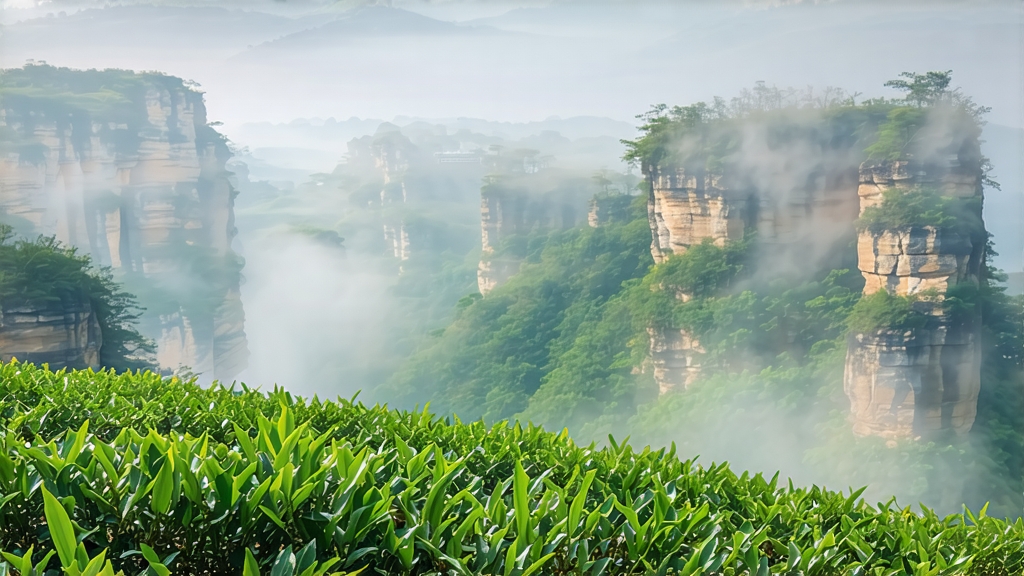
Da Hong Pao—literally “Big Red Robe”—is the most mythic name in the oolong universe, yet what sits in many tins labeled “Da Hong Pao” is often a distant cousin of the real thing. To understand why, one must travel to the jagged, mist-veiled Wuyi Mountains of northern Fujian, where vertical cliffs press the Nine-Bend River into serpentine turns and the air smells of wet stone, pine smoke, and camphor. Here, tea is not agriculture but geology; the Chinese call it yancha, “rock tea,” because the roots of every bush spend decades cracking into weathered volcanic tuff, absorbing minerals that later translate into a flavor Europeans describe as “liquid granite.” Da Hong Pao is the king of yancha, and its story begins with a legend of an imperial scholar whose life was saved by monks who brewed leaves plucked from six ancient bushes clinging to a crevice known as Jiulongke, “Nine-Dragon Nest.” In gratitude, the scholar draped his vermillion court robe over the shrubs so they would survive winter frosts—hence the name. Whether or not the tale is embroidery, those six mother trees, dated to the early Song dynasty, still stand inside a gated reserve, their cuttings guarded like state treasures. Since 2006 the Chinese government has forbidden any further harvest from them; every gram of “mother-tree tea” now resides in national vaults or state banquets, making the original Da Hong Pao rarer per ounce than gold.
Yet the name thrives because Wuyi farmers have spent three centuries perfecting the art of vegetative propagation. By taking cuttings (a technique called “short-cutting”) from the genetically identical mother bushes, they created what is now termed qizhong, “strange cultivar,” a collective label for the six officially recognized Da Hong Pao clones: Qi Dan, Bei Dou, Que She, Tie Luo Han, Bai Ji Guan, and Shui Jin Gui. Each clone carries a slightly different aromatic signature—Qi Dan leans toward orchid and dark honey, Bei Dou bristles with cinnamon and flint, while Bai Ji Guan surprises with ripe apricot and toasted sesame—but all must obey the Wuyi terror of mineral-rich soil, narrow temperature swings, and 80 % relative humidity that forces slow growth and concentrates aromatic oils.
Processing Da Hong Pao is a choreography of stress and rest that stretches across twenty-four hours and demands a master who can read moisture in moonlight. The journey begins at dawn when pickers pluck the standard of “three and a half leaves” meaning the terminal bud plus three mature leaves, each the size of a sparrow’s tongue. The busload of greenery is then “withered” on large bamboo sieves set on racks inside a cave-like room heated only by the mountain’s ambient charcoal warmth. For three hours the leaves lose about 10 % of their weight, softening cell walls so that, in the next step—yaoqing—they can be bruised without breaking the skin. Yaoqing, literally “shaking green,” is the moment when oxidation direction is decided. A craftsman tosses five kilos of leaves into a cylindrical rattan drum that rotates exactly 28 times per minute for eight minutes, then rests for twenty, repeating the cycle six times through the night. Each toss cracks the leaf edge, releasing enzymes that interact with oxygen to create the amber pigments and floral lactones that define oolong. By sunrise the leaf aroma has migrated from cut grass to peach skin and finally to something reminiscent of warm brioche; at this precise point oxidation is arrested by a 260 °C tumble in a gas-heated drum for ninety seconds, a step called “killing the green.”
What follows is the signature Wuyi act that separates rock oolong from all other teas: charcoal roasting. The fixed leaves are kneaded into tight braids, dried to 20 % moisture, then loaded into six-foot tall bamboo baskets separated by horsehair cloth. For the first roast the basket sits over a pit of glowing embers drawn from local hardwoods—mostly longan and peach—for about two hours, during which the tea master smells the rising vapor every ten minutes, waiting for the moment when the fragrance shifts from “raw nut” to “candied stone fruit.” After cooling, the leaves rest for thirty days so that residual heat travels from shell to core, homogenizing moisture.